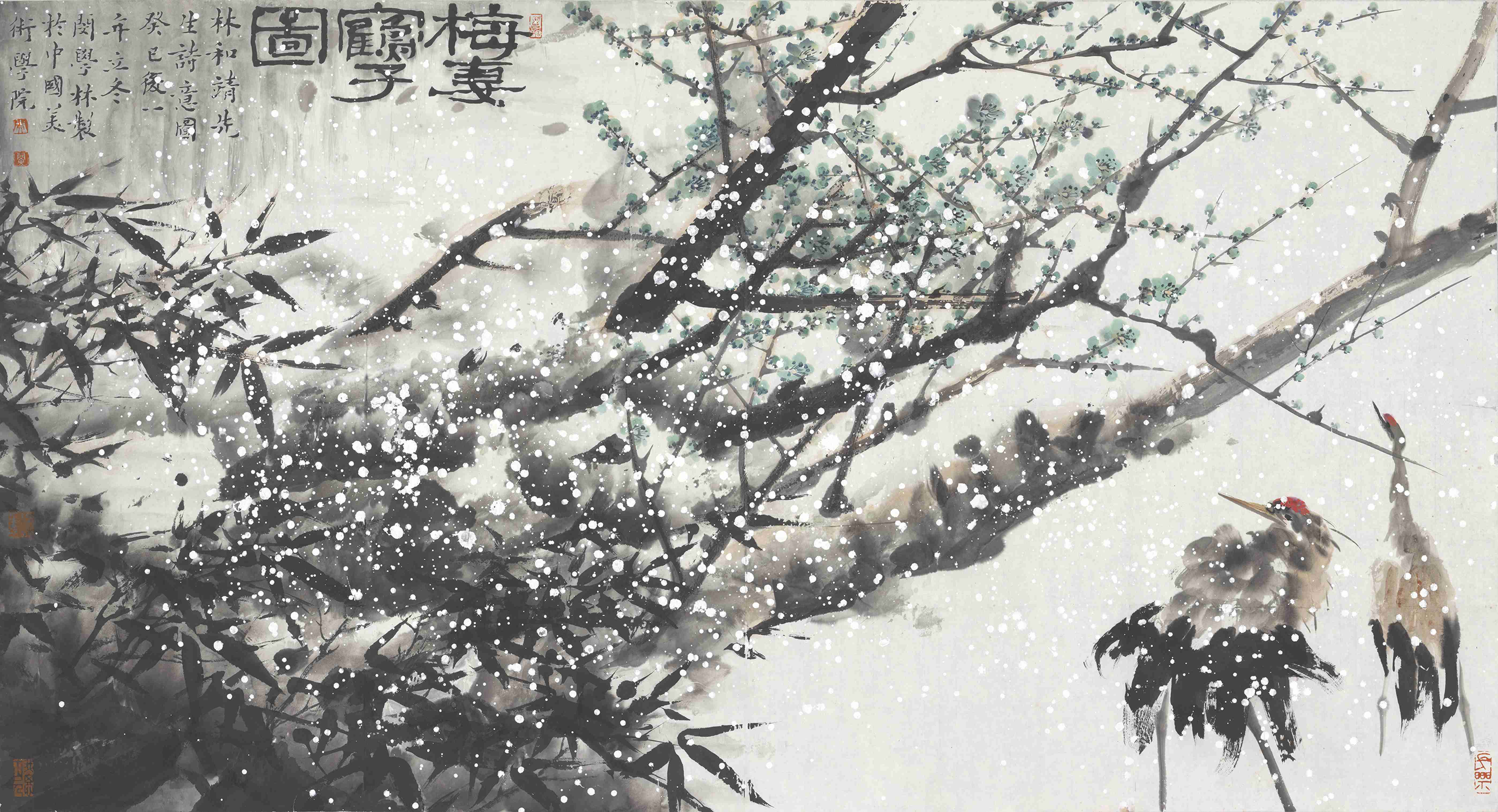The Charm of Ink and Wash
---Painting named“Wife and son of a recluse”by Min Xuelin(闵学林)
Written By Krista Chen 2022/6/19
A person should learn to appreciate some art masterpieces in his lifetime. Through paintings, not only can we improve our aesthetic taste of art, but also learn about the rich history and culture of a nation.
Today, I’d like to introduce a Chinese flower-and –bird Painting“Wife and son of a recluse梅妻鹤子” by Mr. Min Xuelin to you. Mr. Min was born in Nanchang, Jiangxi Province. In 1980, he graduated from the Department of Chinese Painting of Zhejiang Academy of Fine Arts, the graduate class of flower –and- bird. Currently he is a professor and doctoral supervisor of China Academy of Art, member of Chinese Artists Association, member of Chinese Calligraphy Association, council member of China Bada Shanren Research Association, honorary chairman of Hangzhou Artists Association.

A legendary tale says that a single man, never married, named Lin Bu (林逋), also called He Jin(和靖)longed for the carefree life of a hermit, he lived in seclusion on a lonely mountain by West Lake, planting plum trees and raising cranes. He was a good poet and writer but never kept any of his writings, tearing them up right after penning them. He loved plum blossoms like his wife and his cranes as sons. In his poetry collection, he had eight poems of plum blossoms, collectively called “The Eight Plums on the Lonely Mountain”. Su Shi once said in his poem "Written after the Poetry of Lin Bu": "Mr.Lin is an extraordinary person, unstained by worldliness" Lin Bu loved plum blossoms, and also lived himself into a tree of plum blossoms, which is still fragrant to this day. This story has been a timeless classic of Chinese traditional painting.
Here are a few of what I think are the most impressive aspects upon Mr. Min Xuelin’s painting. First, Mr. Min inherited the tradition of Chinese flower-and –bird painting. His works absorbed good skills of the masters, such as Xugu, Pan Tianshou, and Wu Changshuo. The painting “Wife and son of a recluse”still pay attention to the balanced expression of shape and interest of brush and ink. Second, the artist is very skillfully in using the various colors of ink. For example, on the lower left side of the picture are bamboo branches stretching upward and rightward, in the middle of the picture lie the plum branches with blooming green bud and flowers. The cranes are flapping its wings on the lower right side. Zhang Yanyuan of the Tang Dynasty wrote in his famous book《Paintings of all Dynasties》: “Ink is transported and the five colors are provided.” “Five colors” created a well-proportioned space between bamboo leaves and plum blossoms. Third,crane heads colored with vermilion together with green plum blossom enriched the colorless picture. White is known as “six color” in Chinese paintings. Here white dots created a winter scene,giving us a carefree, peaceful snowbound world. What’s more, the calligraphy and seals highlighted the content of the picture. Finally,the Chinese characters “mei qi he zi” give us the thoughts which the painter wanted to express directly. It is not the same as the “Mei qi he zi” pictures we see in other places, there is no people on this picture.
Ancient Chinese painters loved to paint plum, orchid, bamboo and chrysanthemum, renowned in Chinese culture as the “four gentleman.” They are believed to represent the character of human beings. Plum blossoms have always been highly appreciated by Chinese literati and scholars because the plum flower is not afraid of the cold, blossom all alone in the chilly snowfall. It also symbolizes the renewal of all things, peace, and happiness. Its flowers are small, but they are very beautiful, so it means beauty, representing beautiful women.
Bamboo, a beloved plant in traditional Chinese culture, was dubbed one of the “Three companions in winter”, along with plum blossom and pine tree. Bamboo is straight in form, breakable but not easily bendable. It represents moral integrity. Bamboo joints never stop growing, symbolizing endeavor. Bamboo is hollow inside, which coincides with the Chinese phrase for humility. With no blossom, and unadorned year round, it is considered plain and pristine.
In the traditional Chinese form of painting, the combination of plum blossoms and bamboo on one picture is called “mei zhu shuang Qing”.






Comment